Pengyu Gao
HiQA: A Hierarchical Contextual Augmentation RAG for Massive Documents QA
Feb 01, 2024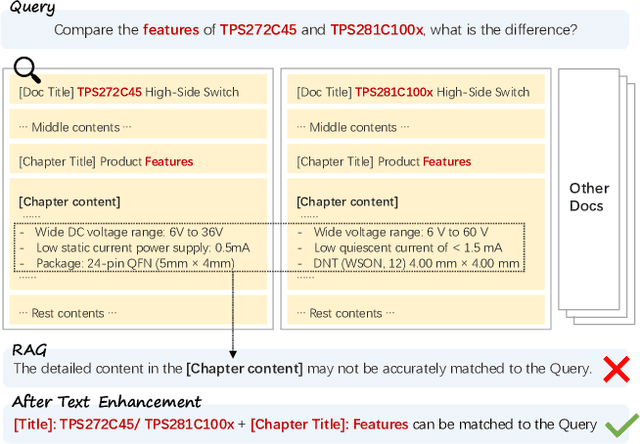

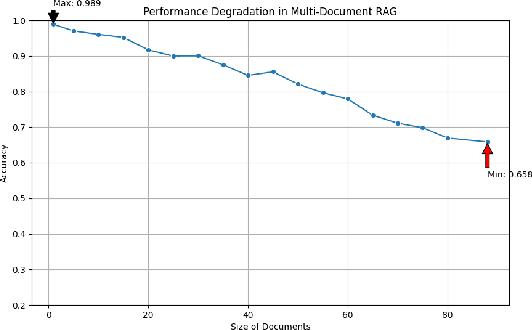
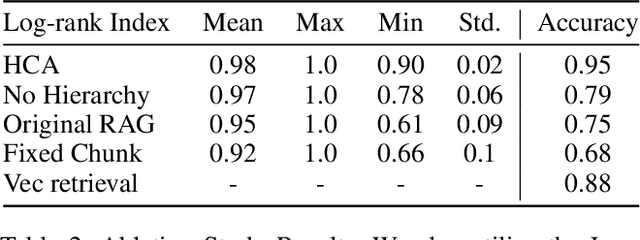
Abstract:As language model agents leveraging external tools rapidly evolve, significant progress has been made in question-answering(QA) methodologies utilizing supplementary documents and the Retrieval-Augmented Generation (RAG) approach. This advancement has improved the response quality of language models and alleviates the appearance of hallucination. However, these methods exhibit limited retrieval accuracy when faced with massive indistinguishable documents, presenting notable challenges in their practical application. In response to these emerging challenges, we present HiQA, an advanced framework for multi-document question-answering (MDQA) that integrates cascading metadata into content as well as a multi-route retrieval mechanism. We also release a benchmark called MasQA to evaluate and research in MDQA. Finally, HiQA demonstrates the state-of-the-art performance in multi-document environments.
Index Modulation for Fluid Antenna-Assisted MIMO Communications: System Design and Performance Analysis
Dec 25, 2023



Abstract:In this paper, we propose a transmission mechanism for fluid antennas (FAs) enabled multiple-input multiple-output (MIMO) communication systems based on index modulation (IM), named FA-IM, which incorporates the principle of IM into FAs-assisted MIMO system to improve the spectral efficiency (SE) without increasing the hardware complexity. In FA-IM, the information bits are mapped not only to the modulation symbols, but also the index of FA position patterns. Additionally, the FA position pattern codebook is carefully designed to further enhance the system performance by maximizing the effective channel gains. Then, a low-complexity detector, referred to efficient sparse Bayesian detector, is proposed by exploiting the inherent sparsity of the transmitted FA-IM signal vectors. Finally, a closed-form expression for the upper bound on the average bit error probability (ABEP) is derived under the finite-path and infinite-path channel condition. Simulation results show that the proposed scheme is capable of improving the SE performance compared to the existing FAs-assisted MIMO and the fixed position antennas (FPAs)-assisted MIMO systems while obviating any additional hardware costs. It has also been shown that the proposed scheme outperforms the conventional FA-assisted MIMO scheme in terms of error performance under the same transmission rate.
Low-Complexity Block Coordinate Descend Based Multiuser Detection for Uplink Grant-Free NOMA
May 23, 2022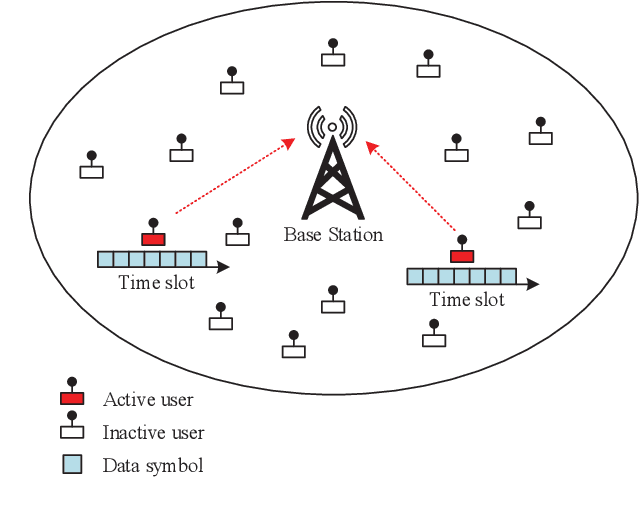
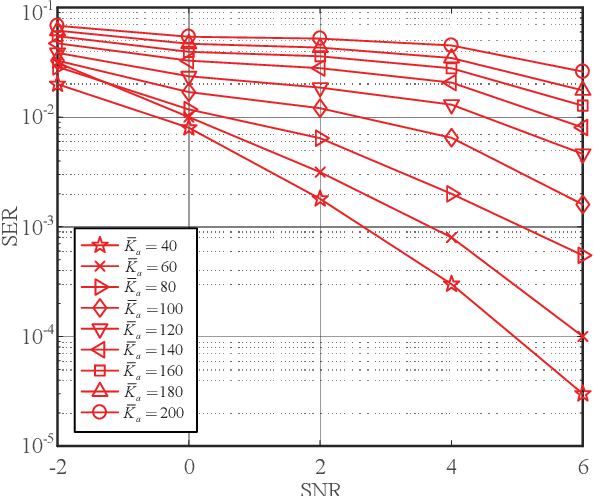
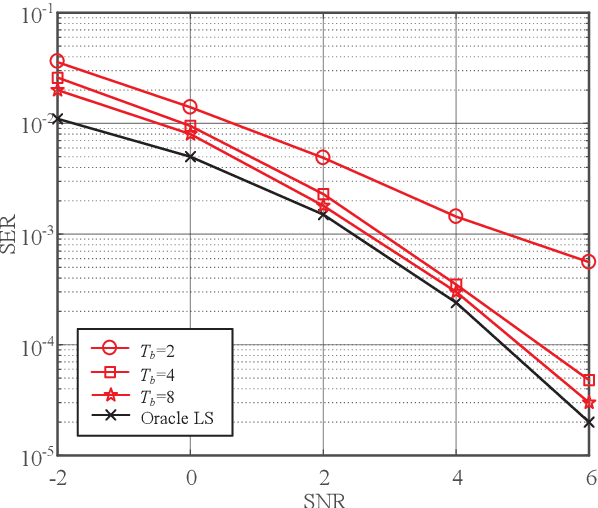
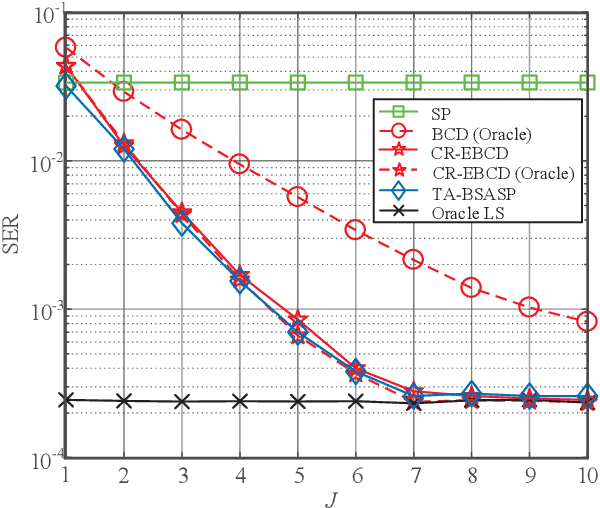
Abstract:Grant-free non-orthogonal multiple access (NOMA) scheme is considered as a promising candidate for the enabling of massive connectivity and reduced signalling overhead for Internet of Things (IoT) applications in massive machine-type communication (mMTC) networks. Exploiting the inherent nature of sporadic transmissions in the grant-free NOMA systems, compressed sensing based multiuser detection (CS-MUD) has been deemed as a powerful solution to user activity detection (UAD) and data detection (DD). In this paper, block coordinate descend (BCD) method is employed in CS-MUD to reduce the computational complexity. We propose two modified BCD based algorithms, called enhanced BCD (EBCD) and complexity reduction enhanced BCD (CR-EBCD), respectively. To be specific, by incorporating a novel candidate set pruning mechanism into the original BCD framework, our proposed EBCD algorithm achieves remarkable CS-MUD performance improvement. In addition, the proposed CR-EBCD algorithm further ameliorates the proposed EBCD by eliminating the redundant matrix multiplications during the iteration process. As a consequence, compared with the proposed EBCD algorithm, our proposed CR-EBCD algorithm enjoys two orders of magnitude complexity saving without any CS-MUD performance degradation, rendering it a viable solution for future mMTC scenarios. Extensive simulation results demonstrate the bound-approaching performance as well as ultra-low computational complexity.
What Will Your Child Look Like? DNA-Net: Age and Gender Aware Kin Face Synthesizer
Nov 16, 2019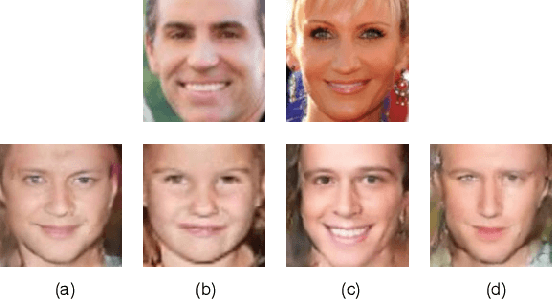
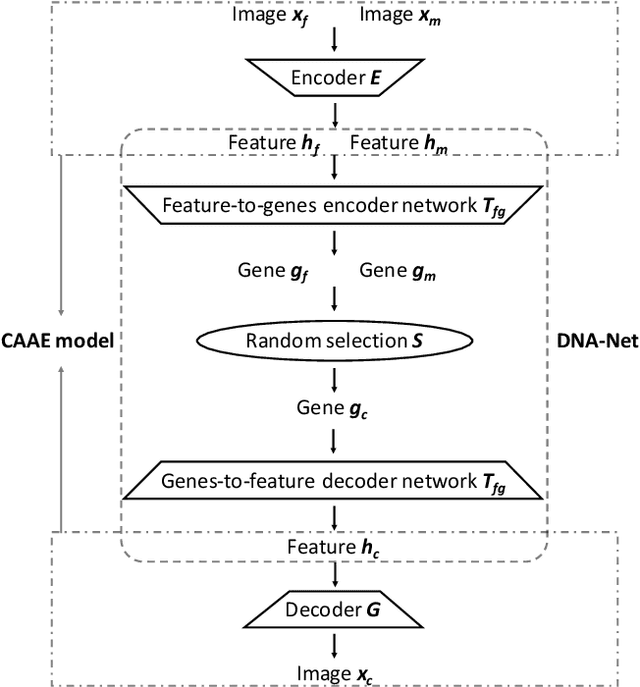

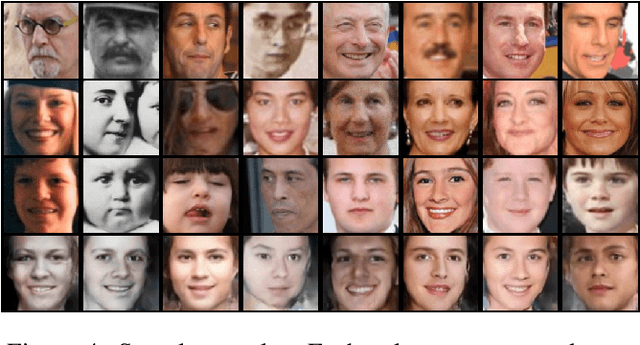
Abstract:Visual kinship recognition aims to identify blood relatives from facial images. Its practical application-- like in law-enforcement, video surveillance, automatic family album management, and more-- has motivated many researchers to put forth effort on the topic as of recent. In this paper, we focus on a new view of visual kinship technology: kin-based face generation. Specifically, we propose a two-stage kin-face generation model to predict the appearance of a child given a pair of parents. The first stage includes a deep generative adversarial autoencoder conditioned on ages and genders to map between facial appearance and high-level features. The second stage is our proposed DNA-Net, which serves as a transformation between the deep and genetic features based on a random selection process to fuse genes of a parent pair to form the genes of a child. We demonstrate the effectiveness of the proposed method quantitatively and qualitatively: quantitatively, pre-trained models and human subjects perform kinship verification on the generated images of children; qualitatively, we show photo-realistic face images of children that closely resemble the given pair of parents. In the end, experiments validate that the proposed model synthesizes convincing kin-faces using both subjective and objective standards.
 Add to Chrome
Add to Chrome Add to Firefox
Add to Firefox Add to Edge
Add to Edge